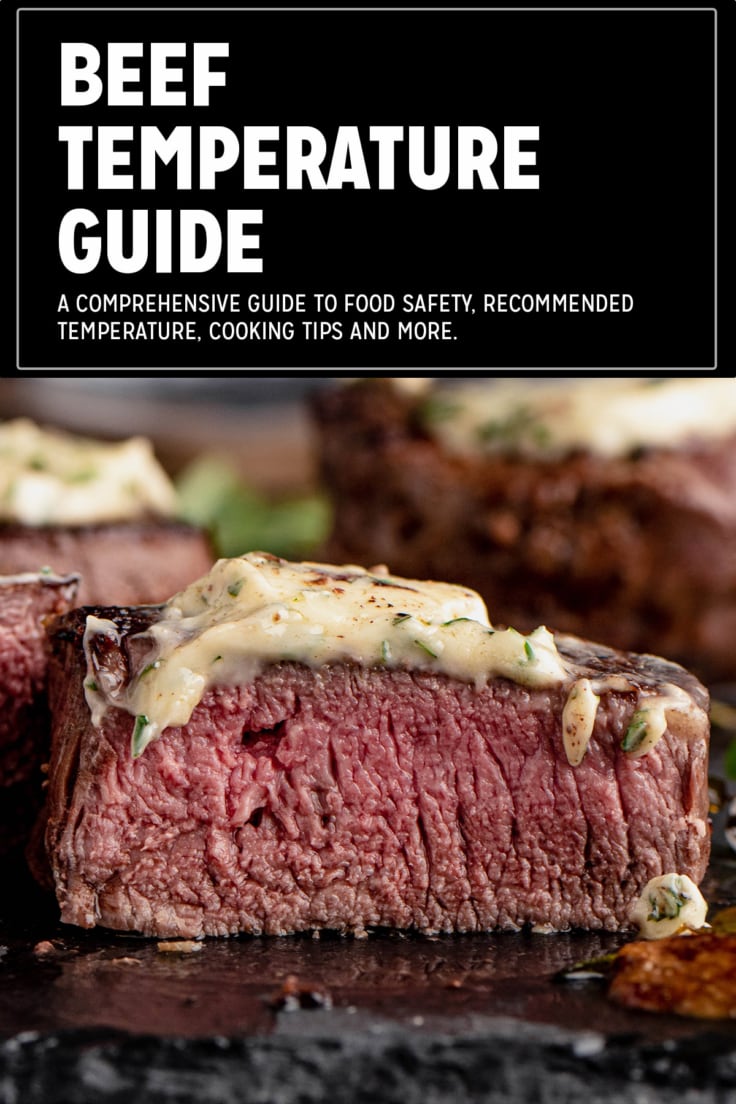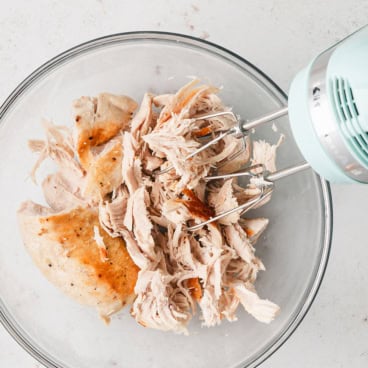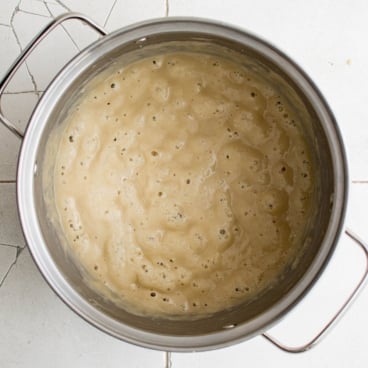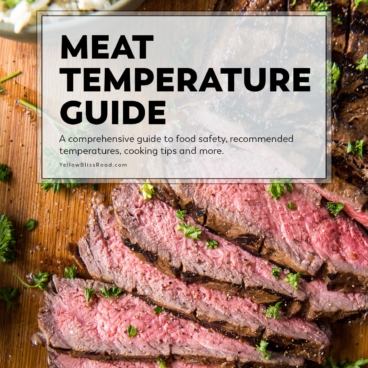This post may contain affiliate links. Please read our disclosure policy.
This handy Beef Temperature Chart will teach you the proper internal temperatures for all different types of beef. Understanding food safety is crucial to keeping your family from getting sick!
Print out the handy temperature chart for beef to keep in your kitchen, or access it online, and save this post – it’s full of important food safety tips! Use it any time you’re cooking one of my beef recipes!
I’ve also got an informative (and free!) printable Meat Temperature Chart to check out, where you’ll find information on all kinds of meat and fish, shellfish, shrimp, ground poultry or a whole bird.
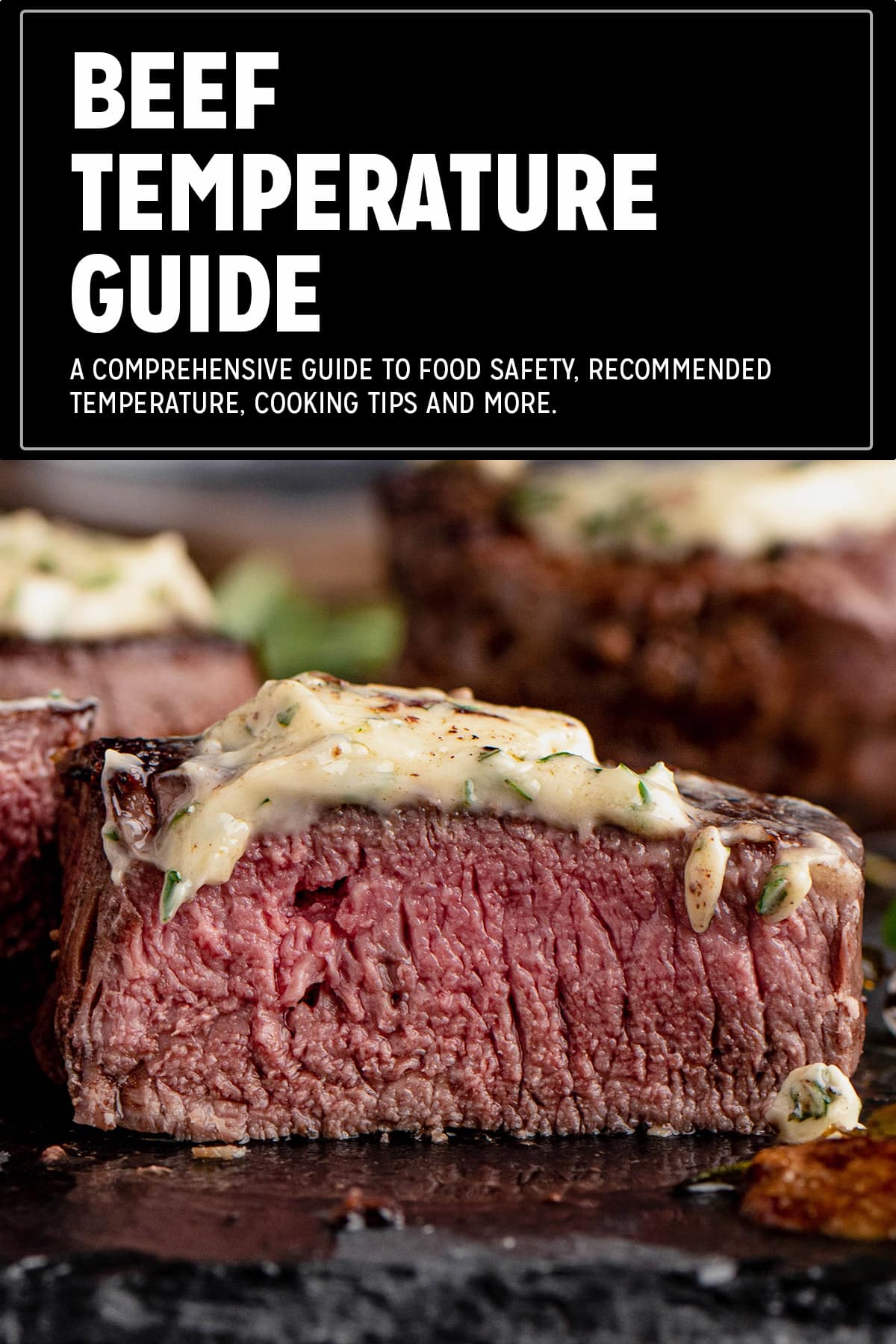
Printable Beef Temperature Chart
Understanding the correct minimum internal temperatures for beef is crucial for any home chef. Consuming undercooked meat can result in severe illnesses brought about by harmful bacteria lurking in your meal.
Within this article, you will gain valuable insights into USDA and FDA-recommended food temperatures and additional food safety recommendations. These insights will enable you to maintain the well-being and safety of your loved ones.
But first, here is a convenient beef temperature chart. You can easily print it out and display it in your kitchen, or have it readily accessible on your phone or iPad while preparing your meals, ensuring each one is prepared with utmost safety in mind!
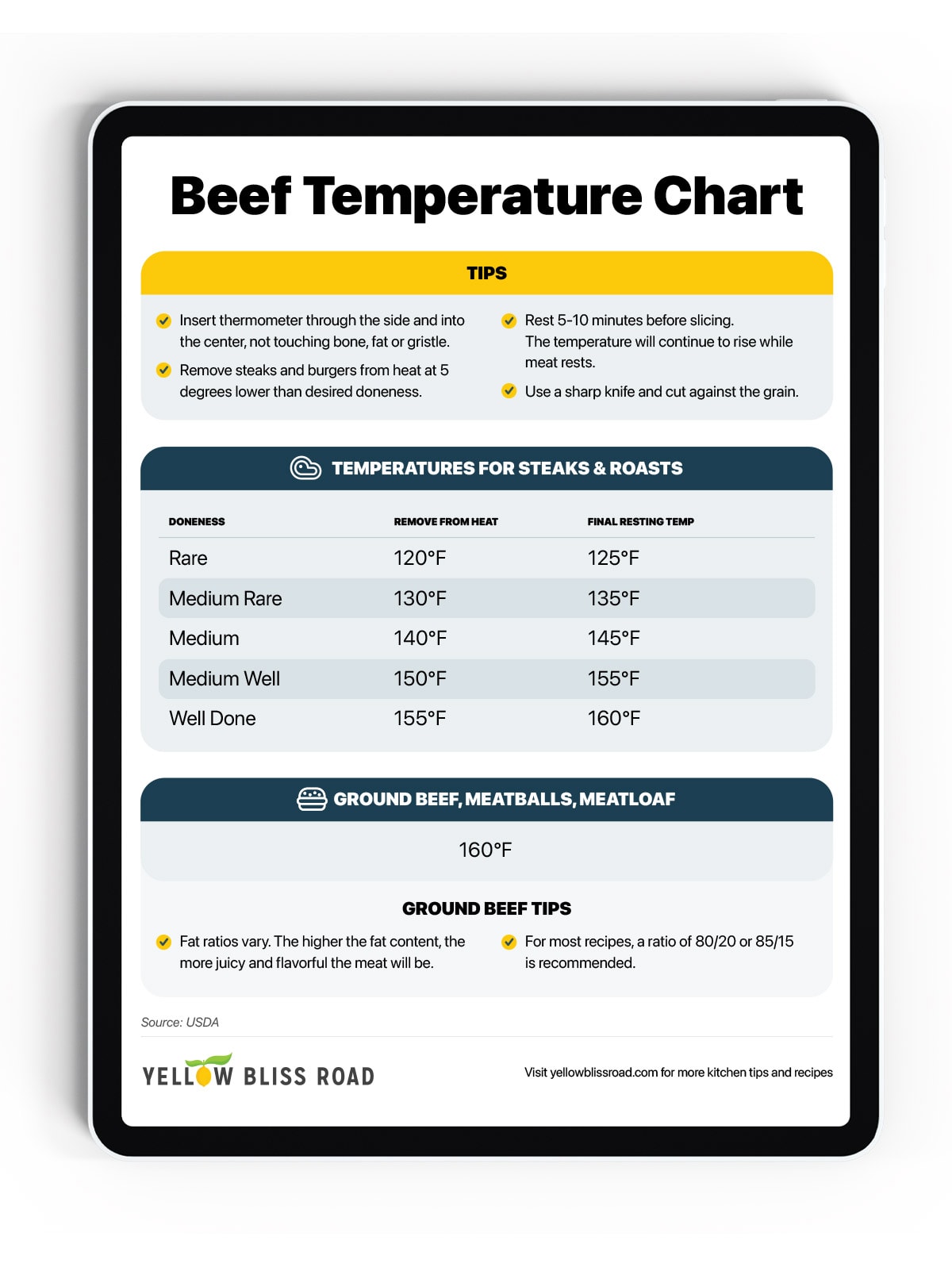
Always Cook Beef to a Safe Internal Temperature
When you’re cooking, don’t rely on how the beef looks or feels, or the pink color in the center. Always check the internal temperature for the most accurate (and safest) answer and always cook your food to the FDA-recommended internal temperature.
There are three temperature guidelines to keep in mind when preparing meat or eggs at home: Eggs and all ground meats should reach a minimum internal temperature of 160°F, poultry and fowl should be cooked to 165°F, and fresh meat steaks, chops, and roasts should be brought to an internal temp of 145°F.
I highly recommend having a food thermometer in your kitchen to make getting the internal temperature easy.
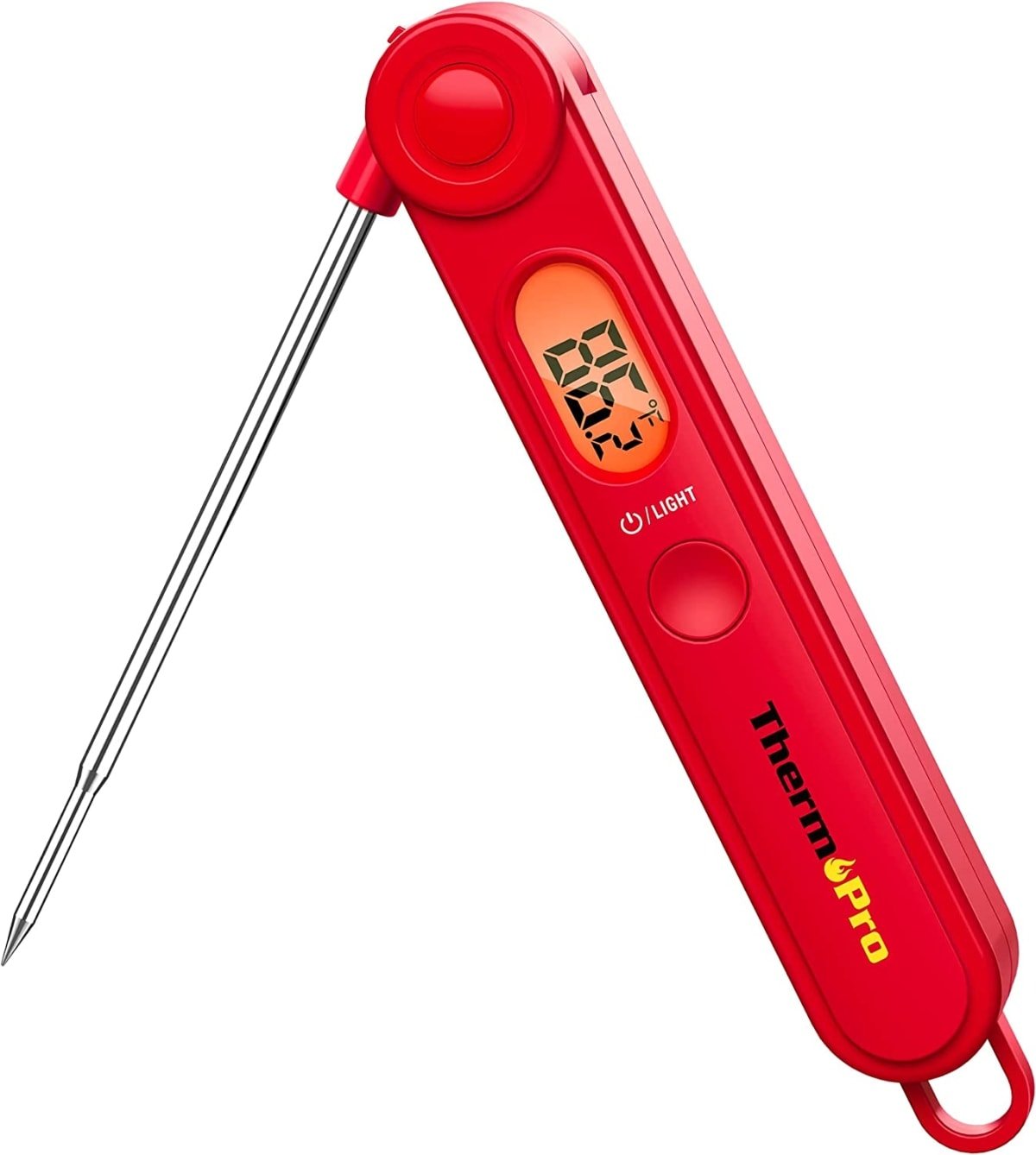
Thermopro Digital Instant Read Meat Thermometer
I highly recommend investing in a meat thermometer for your kitchen. It’s very affordable and often on sale! This is the one I’ve used for years and it has a hundred thousand positive reviews.
How To Use A Meat Thermometer
Using a meat thermometer is handy because it can ensure that your expensive steak or beef roast doesn’t wind up overcooked and dry.
It’s especially critical to check the internal temperature of your beef to ensure that it’s fully cooked. You don’t want pesky bacteria getting in the way of your dinner plans!
When taking the temperature, make sure to place the instant-read thermometer in the thickest part of the meat, away from bone, fat, or gristle. If you take the temperature of a thinner part, the thicker parts may not be fully cooked and you won’t get an accurate read.
What Are The Safe Temperatures for Beef?
The safe minimum internal temperature to cook beef to varies by type of beef (steak vs ground), your personal preference (Medium vs Well Done), and thickness of the cut.
Beef Temperatures
Beef Steaks and Roasts: Allow to rest for at least 3 minutes so the juices can redistribute. It’s best to remove the meat from the heat when it’s 5 degrees lower than the desired temperature, as the temperature will continue to rise as it rests.
- Rare: 110°F – 120°F
- Medium Rare: 120°F – 130°F
- Medium: 130°F – 140°F
Ground Beef: While steaks and roasts can be cooked to a lower temp to be rare or medium rare, ground beef should be fully cooked to well done, with an internal temp of 160℉. This includes meatballs, hamburgers, and meatloaf. Other ground meat, like pork, lamb, chicken, and turkey should be cooked to 165℉. Check out my ultimate guide on How to Cook Ground Beef for even more information, tips and tricks!
Casseroles should read at least at 160℉, especially if they are being reheated.
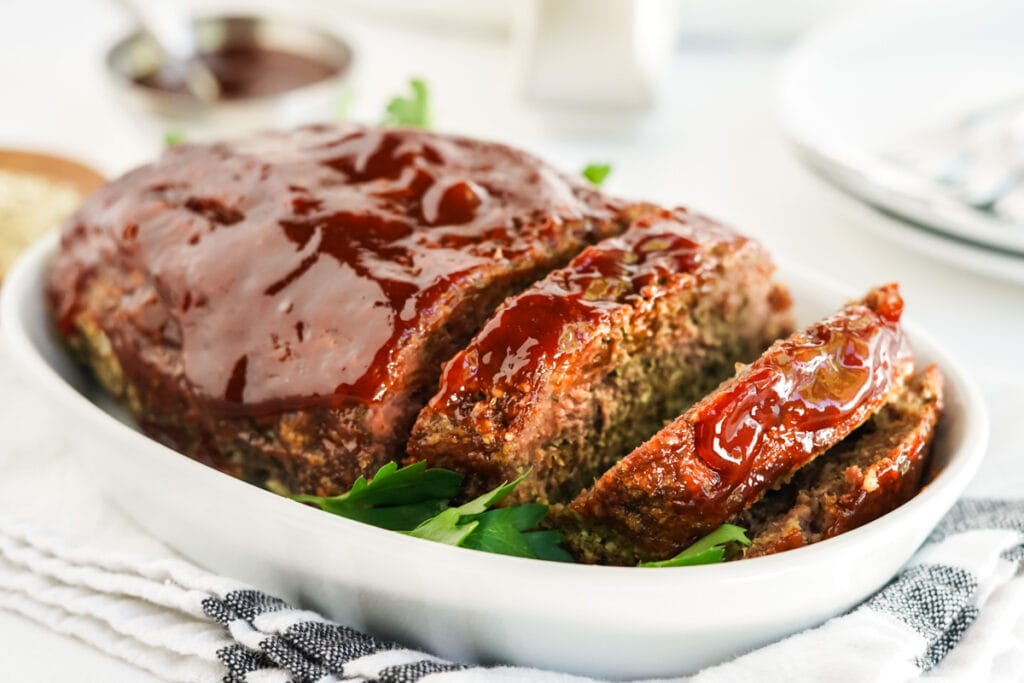
Beef Cooking Times
The time it takes to cook beef depends on your desired doneness, the cut of beef, and the thickness.
- Filet Mignon and Center-Cut Ribeye
- Rare: 3-4 minutes per side
- Medium Rare: 3.5-4.5 minutes per side
- Medium: 4-5 minutes per side
- Sirloin Strip Steaks, Ribeye Steaks, and Porterhouse Steaks
- Rare: 4-6 minutes per side
- Medium Rare: 5-7 minutes per side
- Medium: 6-8 minutes per side
Beef – The Flesh Test
In addition to using temperature to tell when steak is done, you can also gently press the meat with your finger to test for doneness. Keep in mind this is not an exact science! It does help though in the absence of a meat thermometer.
- Rare – Should feel like your cheek
- Medium Rare – Should feel like your chin
- Medium – Should feel like your forehead
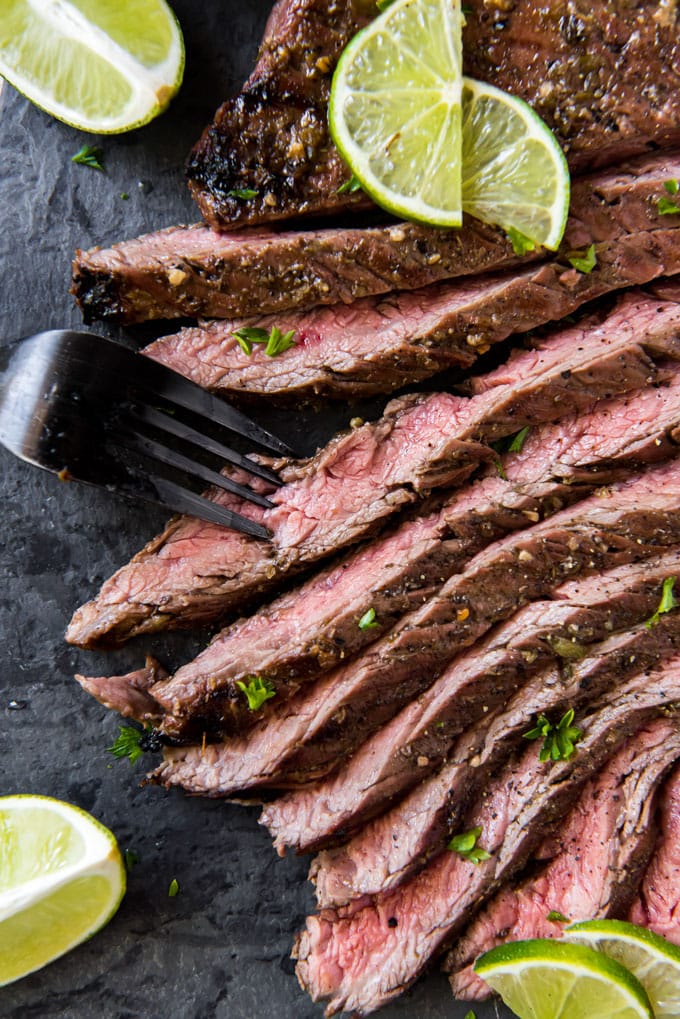
Storing Leftovers
In order to keep leftovers out of the “Danger Zone”, leftovers must be refrigerated within 2 hours of cooking (or in an appliance keeping the food warm, like a slow cooker). If the temperature of the environment is warmer than 90℉ (like outside at a backyard picnic in the summer) then the time is shortened to 1 hour.
This really goes for everything beef – from pot roast to hamburgers to meatballs. If you’re straddling that 2 hour mark, wrap it up and get it in the fridge.
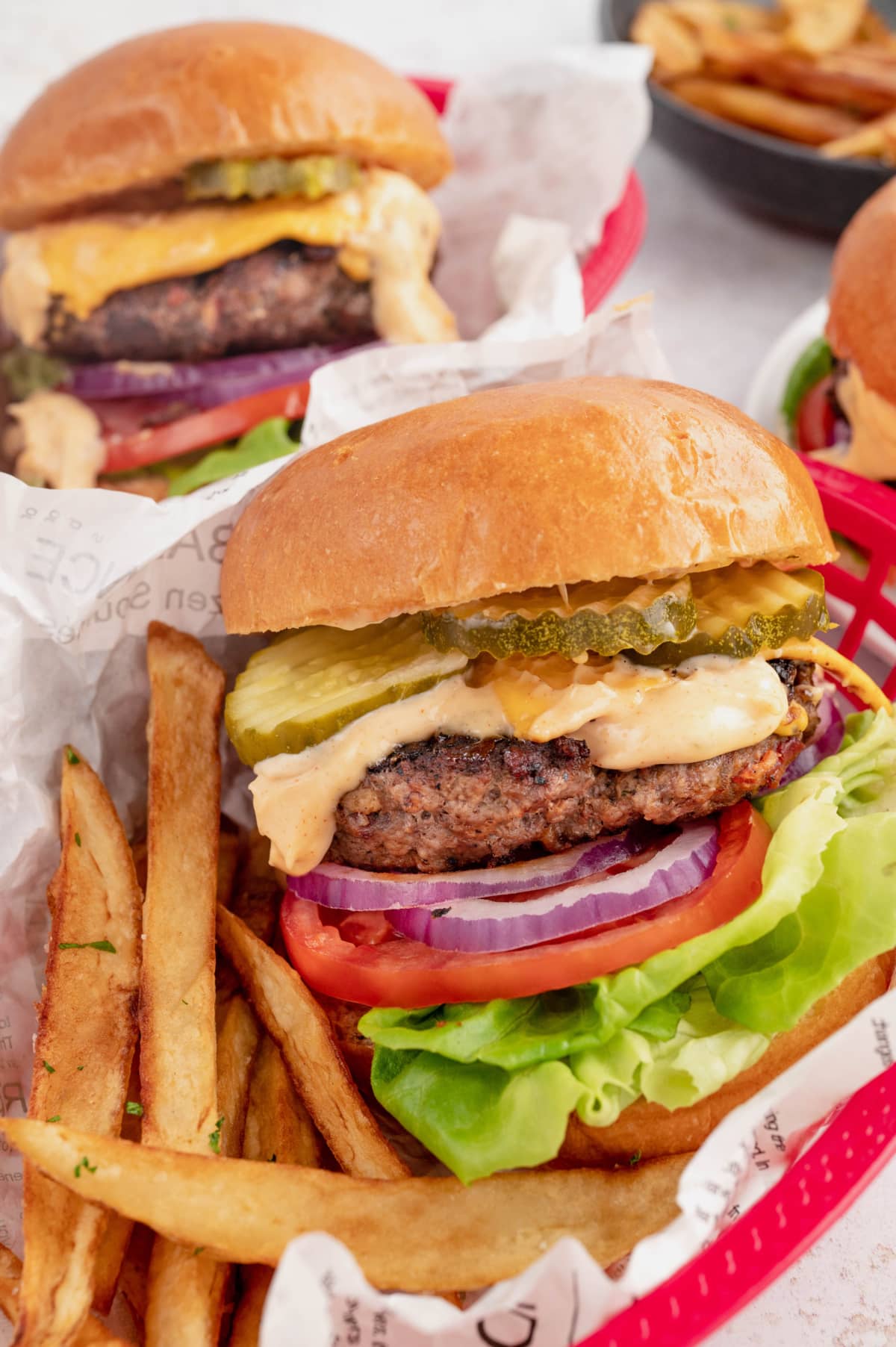
Expert Tips
- Resting – Resting beef before cutting is key so that the juices can redistribute, but the temperature will continue to rise while it rests. Remove steaks and burgers from heat at 5 degrees lower than desired doneness. Rest 5-10 minutes before slicing.
- Proper thermometer placement – Insert thermometer through the side and into the center, not touching bone, fat or gristle. If you don’t take the temperature in the center then the beef may not be fully cooked.
- Cut against the grain – For tender slices of beef, use a sharp knife and cut against the grain.
- Always cook food to a safe temperature – Do not rely on the color of meat in the middle. Using the internal temperature is the safest way to go! Using a thermometer makes getting the internal temperature easy.
- Keep hands and surfaces clean – When handling raw meat, it’s important to wash hands and surfaces often to avoid cross-contamination.
- Use a separate cutting board just for meat – It’s best to use a designated plastic cutting board that is dishwasher safe for raw meat and save your wood cutting board for produce.
- Refrigerate food promptly – When you bring raw beef home from the store, it’s important to immediately place it in the fridge or freezer.
In case you missed it, click HERE for the printable guide to the proper temperature for cooking beef.
